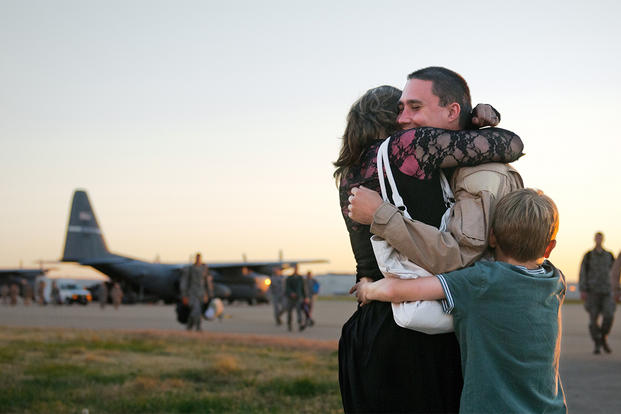The top military life concern for military families and active-duty service members has shifted from pay and benefits issues to troops' time away from their families, a departure from a trend that had persisted for many years, according to a new report released Wednesday.
The Blue Star Families Military Family Life Survey, conducted annually since 2009, had long shown military pay and benefits as the top concern, with retirement issues also sitting in the top five.
But this year, those problems dropped to second and seventh place respectively among family members, while "time away from family" rose to the top.
That change shows a deep weariness and a cultural shift in expectations among military families, said Cristin Orr Shiffer, the senior adviser for policy and surveys at Blue Star Families.
"Was I surprised by that? Not really," she said. "We're seeing a cultural change to expectations ... Maybe if there's a high operational tempo, that's OK for the short term. But the reality is that it's become the new normal. If the new normal is a high ops tempo, then what does that mean for the family and what does that mean for the agreement of a marriage and family over time?"
More than 7,800 people took the survey this year, down from about 8,300 who took it in 2016.
About 80 percent of respondents were military family members, and about 48 percent said their or their service member's rank was between E5 and E9, while 20 percent said they were between O4 and O6. About 35 percent were between the ages of 25 and 34, while 33 percent were between 35 and 44 years old.
That concerns over pay and retirement benefits dwindled could also signal that troops and families no longer see those entitlements as under direct threat from lawmakers, experts said.
Sequestration, changes to the military retirement system and Tricare and commissary reform had been top issues on Capitol Hill. But as legislation has passed or other issues have come to the forefront, changes to those benefits have taken a back seat.
It's likely that stress over them in the military community has reduced as a result, said Kathy Roth-Douquet, Blue Star Families chief executive officer.
"Even though a lot of people don't understand this new retirement system, they at least are relieved it's done," she said. "When the review was going on, the concern was really high."
Survey results this year also showed an increase in unemployment among military spouses, from 21 to 28 percent. But at the same time, they showed a year-over-year decrease in the number of spouses who do not want to be in the labor force.
That means it's likely that the unemployment increase is due to more spouses looking for work to start with -- not fewer spouses overall finding employment.
"I think that what that is, is Blue Star Families and others have successfully raised this topic enough in the conversation that people start to think, 'Oh, I don't have to be out of the workforce,' " Roth-Douquet said.
Both the worry among families over military absence and concerns over employment support point back to a need for the Defense Department to better understand the expectations of currently serving troops, and what it will take to retain them, Orr Shiffer said.
"DoD has come a long way during the last 16 years in starting to see what role military families play in military support,” she said. “But there still needs to be a better update going on [about] what military families look like, because they don't look like they did in the 1970s.”
-- Amy Bushatz can be reached at amy.bushatz@military.com.















